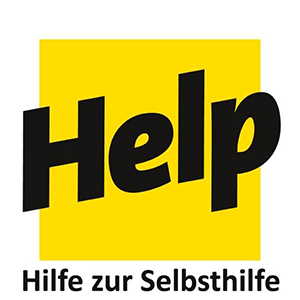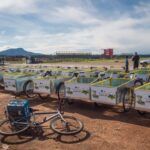:: PROJECT
Mon – 22 Winterisation Assisstance for 2,000 Roma IDPs from Kosovo
:: DONOR
German Foreign Ministry
:: REALISATION / BUDGET
October until December 2002 :: € 72.612
:: SHORT DESCRIPTION
Ever since the former Yugoslavia started to break up in the early 1990s which resulted in enormous movements of its population Montenegro had become a place of refuge and asylum for refugees and displaced persons. There were times that up to 20% of Montenegro’s population consisted of refugees and IDPs. For the smallest and poorest of Yugoslavias former republics this was a burden that it could not possibly shoulder on its own. Presently there are still 14.418 refugees from Bosnia and Hercegowina and Croatia in Montenegro as well as 29.132 persons who had fled from Kosovo. In addition to the 14.418 refugees there exist another 666 persons with the status of “double refugees”. These are Serbs who had first fled from Bosnia and Hercegowina and Croatia to Kosovo and who had to leave their first place of asylum after the retreat of the Yugoslav army from that province. In total there are now 43.820 refugees and IDPs in Montenegro which corresponds to 7.12% of its population. Given the present conditions in Kosovo return is not possible for the bulk of its displaced population.
The majority of the displaced persons now living in Montenegro arrived after the retreat of the Yugoslav army from the Kosovo between June and August 1999. The displaced live in roughly even parts in the North, Center and South of the country. The bulk of the displaced Roma population (67%) settled in the center, mainly in Podgorica. 32% of the displaced identify themselves as Montenegrins, 25% as Roma or Egyptians, approx. 22% as Serbs and 14 % as Moslems.
The displaced live predominantly in private accomodation which is a mixture of friends, relatives and rented housing. However, due to their more recent arrival in Montenegro, a larger proportion (compared with the refugee population) remains in collective centres. Apart from official collective centres there has been the creation of “unofficial” collective centres. Unofficial collective centres are often coastal resort apartment complexes owned by Serbian industries and businesses for their employees, which have been illegally occupied by the displaced persons. In view of the revived tourism pressure is mounting that the displaced persons vacate these former tourist resorts. An estimated 2.204 displaced persons live presently in 29 official collective centers whereas 1.049 displaced live in unrecognised “unofficial2 collective centres.
The most difficult living conditions is encountered by the displaced Roma population. In the immediate vicinity of Podgorica live some 340 families in simple barracks – right next to the municipal dump site! The Roma still living there are among the most needy of the displaced population in Montenegro. From the originally 4.000 inhabitants of the camp they are the ones who lack any alternatives. Given the difficult economic conditions in Montenegro there are hardly any chances of employment which would enable the Roma to cater for their own needs – especially as most of them are without sufficient school education (up to 80% of them are illiterate)!
For this reason HELP will support these persons as well as the 20 women and children who have sought refuge in Podgorica’s women safe house from domestic violence with basic winterisation assistance for the coming months. The financial assistance allocated by the German Foreign Ministry is sufficient to purchase firewood, fresh food items and hygienic products.



